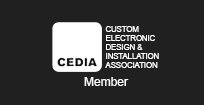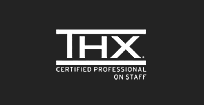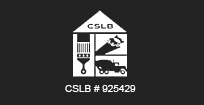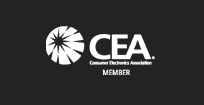Two Advanced LCD Technologies Appear in Soon-to-Ship Consumer TV Sets
Without prior fanfare — or even prior leaks — two advanced LCD technologies appeared in TV sets shown at CES in Las Vegas. Sets with one or another of the technologies will be available this year. The technology that will be the more widely distributed of the two will appear in many Sony Bravia models. Sony calls it Triluminos and says it produces “the best color ever,” but Sony booth personnel could not produce a coherent explanation of what Triluminos actually is. However, Seth Coe-Sullivan and Jason Carlson of QD Vision had no trouble explaining it at all. Triluminos is Sony’s implementation of color system using a quantum-dot backlight, and the backlight unit uses a quantum-dot optical element developed and made by QD Vision. The element is a polymer strip containing an appropriate combination of two kinds of quantum dots: those that convert blue light to green light and those that convert blue light to red light. Blue light? Part of the quantum-dot approach is to use blue LEDs as the backlight’s light source instead of white LEDs.
The technology that will be the more widely distributed of the two will appear in many Sony Bravia models. Sony calls it Triluminos and says it produces “the best color ever,” but Sony booth personnel could not produce a coherent explanation of what Triluminos actually is. However, Seth Coe-Sullivan and Jason Carlson of QD Vision had no trouble explaining it at all. Triluminos is Sony’s implementation of color system using a quantum-dot backlight, and the backlight unit uses a quantum-dot optical element developed and made by QD Vision. The element is a polymer strip containing an appropriate combination of two kinds of quantum dots: those that convert blue light to green light and those that convert blue light to red light. Blue light? Part of the quantum-dot approach is to use blue LEDs as the backlight’s light source instead of white LEDs.
The quantum-dot approach produces narrow spectral emissions for blue, red and green, whereas the conventional approach produces a broad spectrum relatively weak in red and green components. The result is a larger color gamut and more saturated colors that produce an almost OLED-like appearance. QD Vision and competitor Nanosys have both been developing quantum-dot solutions for some time. Now, QD Vision’s implementation is significantly improving color quality across an entire line of Sony Bravia TVs.
The second innovation comes from Sharp and is genuinely difficult to explain. Sharp didn’t really try in its big press conference, simply saying that in addition to its coming 4Kx2K TVs, the company was introducing an FHD Quattron TV that produced images with close to 4Kx2K sharpness. This may sound like output of an overwrought marketing imagination after the drinking of too many glasses of sake — but the technology is real, and its implementation in a TV set in the Sharp booth was very, very effective. In addition, it is considerably less expensive to implement than true 4Kx2K.
In fact, Sharp has made no attempt to keep the technology secret, although the appearance of the set that embodies it did come as a surprise. The technology was carefully described at LatinDisplay 2010 (Sao Paulo, Brazil) by Yasuhiro Yoshida, deputy general manager of Sharp’s Display Systems Laboratories, and his presentation won the conference’s best paper award.
Very briefly, because a Quattron pixel contains four subpixels (red, green, blue and yellow) instead of three, any given color can be created with more than one combination of primaries. This redundancy can be used to create two luminance peaks per pixel instead of the traditional one luminance peak per pixel. Thus, the panel can produce a true 4Kx2K image even though it contains only 2Kx1K (four-primary) pixels.
Both Sony’s and Sharp’s innovations have something in common. Each, in its own way, produces a dramatic improvement in image quality at much lower cost than the available alternatives.








